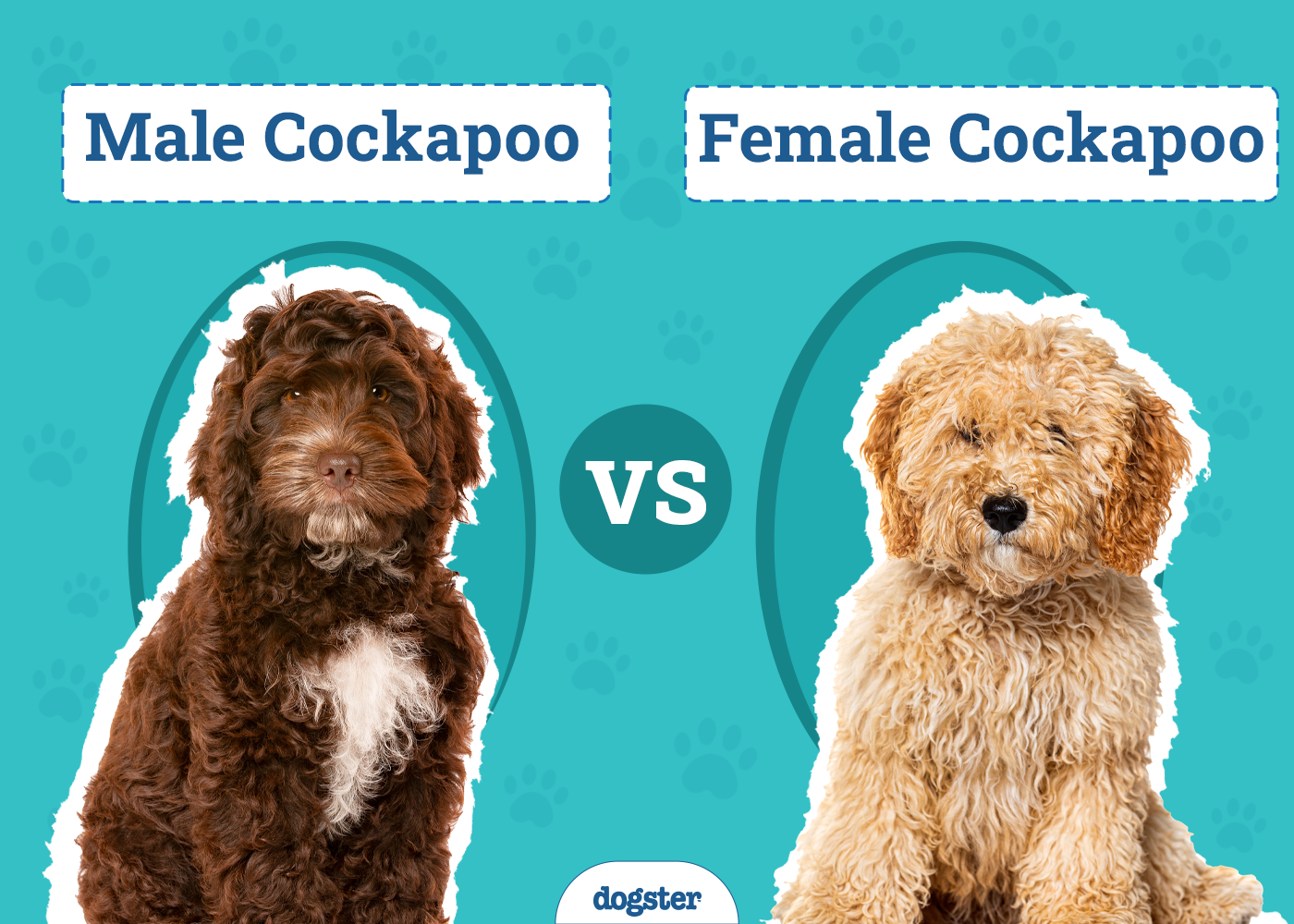In this article
View 3 More +The Cockapoo is a hybrid dog that was first introduced to the world in the 1960s and has been growing in popularity ever since due to their unique appearance and friendly temperament. The Cockapoo is a combination of two popular breeds: the Cocker Spaniel and the Poodle. They often have a variety of different appearances and temperaments. But what does all that mean for you if you’re looking to bring home one of these lovely pups? Let’s take a look at the pros and cons of male and female Cockapoos so you can be better equipped to choose one that fits your lifestyle!

Visual Differences
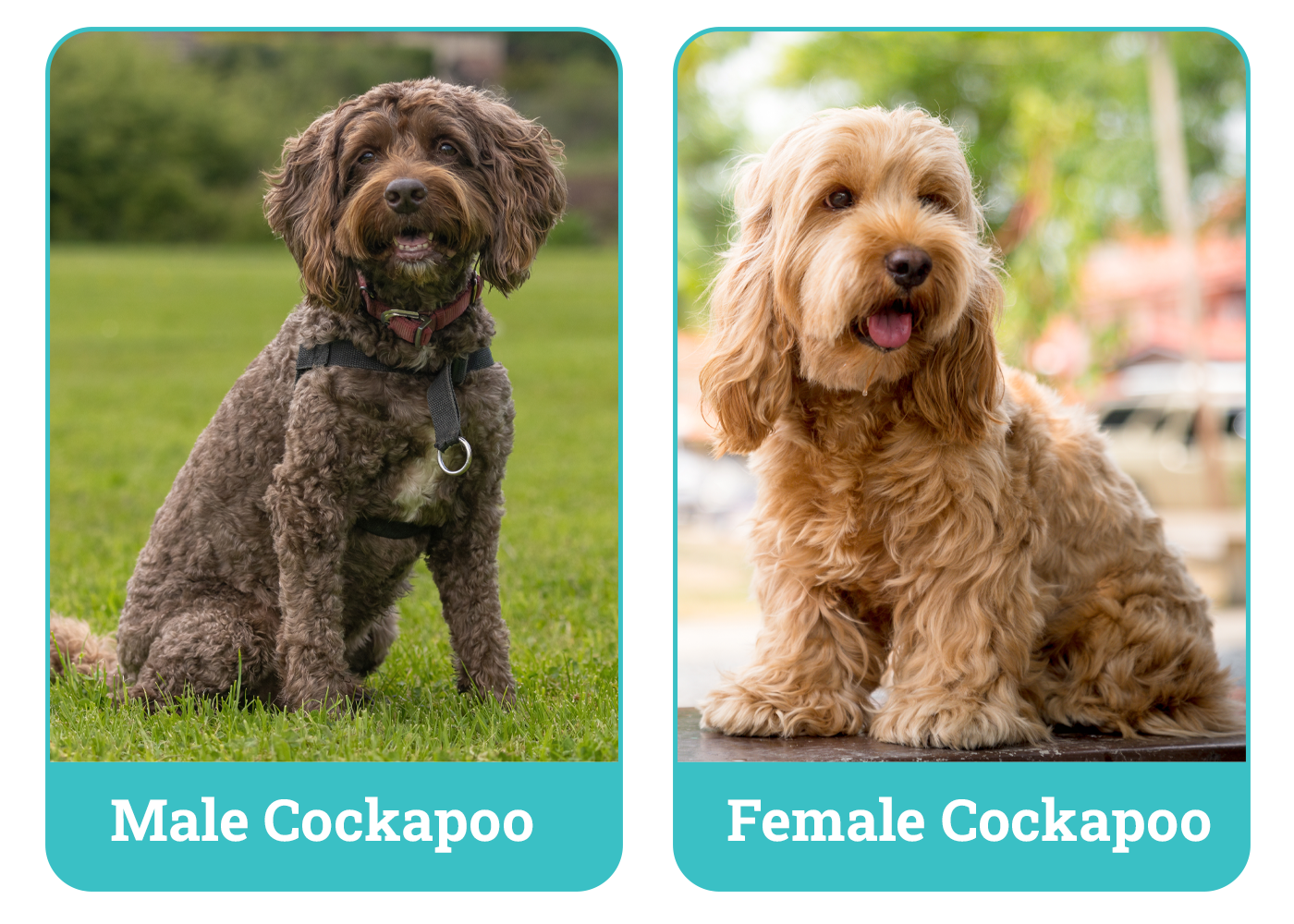
At a Glance
- Average height (adult): 15–18 inches
- Average weight (adult): 15–25 pounds
- Lifespan: 12–15 years
- Exercise: 30 minutes/day
- Family-friendly: Yes
- Dog-friendly: Yes
- Trainability: Good
- Average height (adult): 14–16 inches
- Average weight (adult): 13–20 pounds
- Lifespan: 12–15 years
- Exercise: 30 minutes/day
- Family-friendly: Yes
- Dog-friendly: Yes
- Trainability: Moderate, can be stubborn
Cockapoo 101
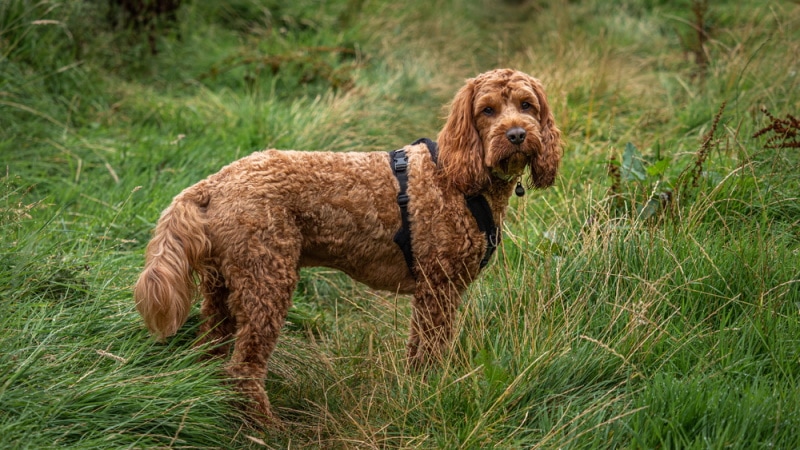
Cockapoos are designer dogs. The first puppies were born accidentally (that is, breeders were not trying to create a new breed), but the exquisite qualities of the Cockapoo — such as a benevolent temperament, keen intelligence, and moderate shedding — attracted breeders, who have worked ever since on developing this hybrid.
Cockapoos are made for family life, and they can also cohabit with other pets. They are affectionate and are known to adapt to different living environments. These cheerful and highly intelligent companions are also eager to please their owners. That said, these dogs do not tolerate loneliness well can suffer from separation anxiety and develop destructive behaviors (barking and chewing) if you leave them alone all day.
These cuties are sensitive and need a gentle but firm education. Their socialization is important from an early age. Moreover, Cockapoos are popular as therapy and assistance dogs due to their balanced nature and devotion to their humans.
However, since the Cockapoo is primarily a crossbreed, keep in mind that their temperament can vary greatly from dog to dog.

Male Cockapoo Overview
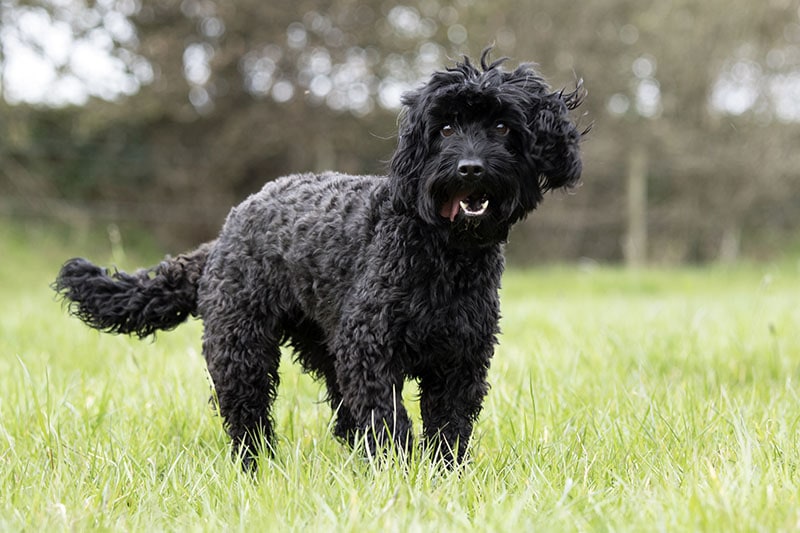
Personality / Character
Male Cockapoos are generally real sweethearts with kids, which makes them ideal choices for families with toddlers. They tend to be more excitable than females, which means they may bark more often, especially if they have pent-up energy and nowhere to release it. Also, male Cockapoos are slightly larger than their female counterparts and are on the higher end of the energy spectrum. Cockapoos with high energy levels tend to be more playful and friendly, making them a good fit for active families. However, unneutered males are more likely to mark their territory indoors, which means you may have a constant cleaning issue to deal with.
Training
Since male Cockapoos like to be the center of attention, are affectionate, and seek to please their owners, training them can be easier than their female counterparts. However, it mostly depends on your puppy’s temperament!
Also, be aware that Cockapoos of both sexes can be prone to separation anxiety, hence the importance of teaching them from an early age that being alone is not scary.
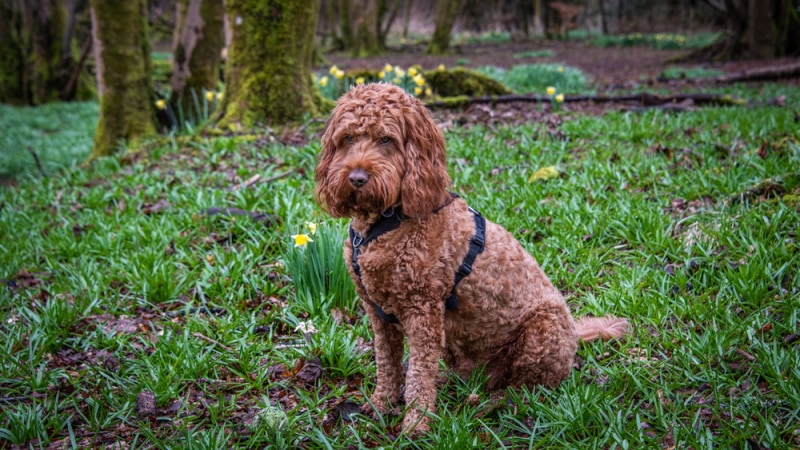
Health & Care
Despite a life expectancy of about 12 to 15 years, Cockapoos are not entirely spared from the health problems that affect purebred dogs, regardless of sex. A few diseases can be inherited from their Poodle and Cocker Spaniel parents. Here are the main ones:
- Ear infections
- Skin issues
- Allergies
- Progressive retinal atrophy (PRA)
- Cataracts
- Bloat
- Hip dysplasia
- Elbow dysplasia
- Liver diseases
- Addison’s disease
- Patellar luxation
Exercise Needs
Male Cockapoos have moderate energy and can be quite rambunctious at times, but they are also happy to curl up in your lap after a short play session. They generally need to burn off their energy for at least 30 minutes each day, which can be achieved by playing fetch in the garden or walking briskly around the block.
Grooming
One of the appeals of Cockapoos is that they don’t shed much, which limits the proliferation of dander throughout your home (which may help reduce allergic reactions for some people). However, just because they don’t shed excessively doesn’t mean they don’t need grooming.
For example, if your Cockapoo has a curly coat, they will probably need a thorough grooming every 3 months, especially if you want to maintain a cute haircut.
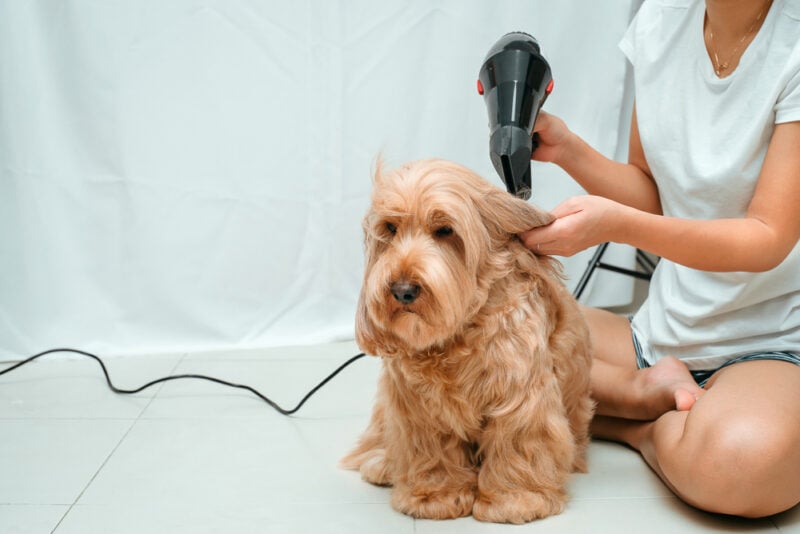
Breeding
Due to their popularity, Cockapoos are susceptible to being sold by unscrupulous breeders looking to maximize their profits. Prospective owners should do careful research in order to find reputable breeders.
To improve your chances of having a healthy puppy, look for a responsible breeder who screens for major hereditary diseases in their dogs.
- Affectionate and playful
- Makes a great lapdog
- Attention seeker
- Easy to train
- Doesn’t tolerate loneliness well
- Stays a puppy for a long time

Female Cockapoo Overview

Personality / Character
Although a bit more independent than males, female Cockapoos are generally gentle, affectionate dogs that enjoy being close to their human families. These lovely pups are playful and good with kids. Females may occasionally bark but aren’t overly excitable or loud.
Besides their smaller size, females are more likely to be shy and reserved. While this may be a good thing when you first bring your Cockapoo home, shy dogs can take longer to warm up to their new families. This means if you have young children, they may want to wait until your dog is more comfortable before playing with her.
Unspayed female Cockapoos may be more likely to be aggressive toward other pets. This may be due to their shyness and can sometimes be remedied with proper training, but it is something to be aware of when looking for a Cockapoo.
Training
Since female Cockapoos tend to be stubborn and a bit bossy, training them can be tricky at times. You need to focus on positive reinforcement from an early age and be firm, consistent, and patient! Otherwise, you might end up with behavioral issues like excessive barking and separation anxiety.
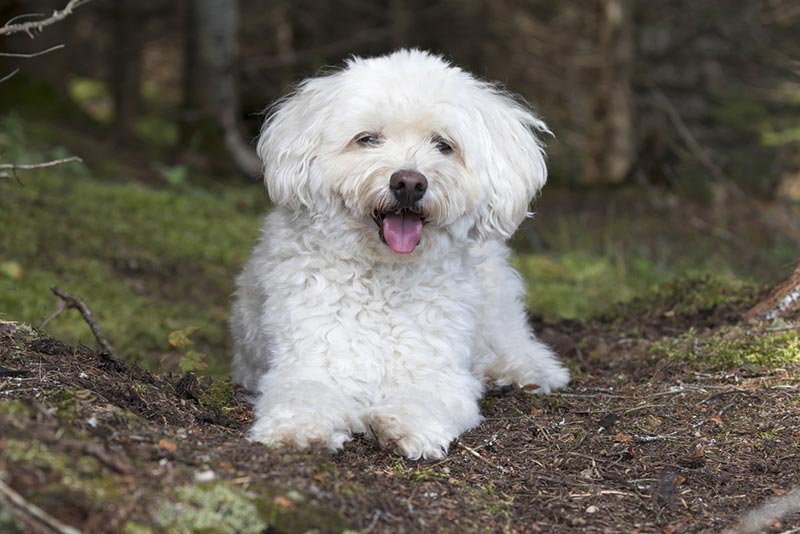
Health & Care
Female Cockapoos can suffer from the same conditions as their male counterparts:
- Ear infections
- Skin issues
- Allergies
- Progressive retinal atrophy (PRA)
- Cataracts
- Bloat
- Addison’s disease
- Hip dysplasia
- Elbow dysplasia
- Liver diseases
- Patellar luxation
Exercise Needs
Female Cockapoos are moderately active dogs that enjoy short walks and being able to run around in a safe, enclosed area. While they aren’t ultra-athletic pups that excel at long-distance running, female Cockapoos can be good jogging partners for short distances.
Grooming
Female Cockapoos generally have short coats that don’t need to be groomed and trimmed as frequently as Poodle coats. You still need to brush their coat regularly, clean and inspect their ears, and trim their nails.
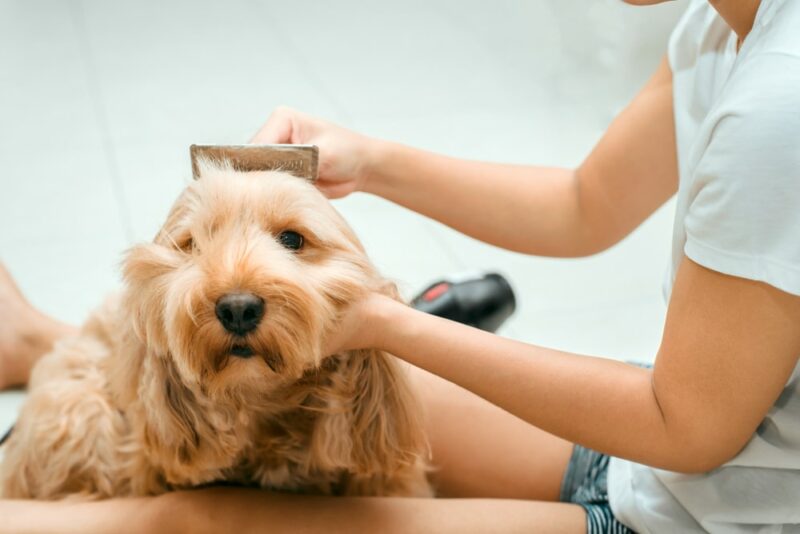
Breeding
When you are ready to purchase a female Cockapoo, as with male Cockapoos, it is your responsibility to do your research beforehand to find reputable and conscientious breeders.
- Easy-going
- Independent
- Matures faster
- Can be harder to train
- More reserved
- Stubborn

Which Gender Is Right for You?
Although there are many similarities between male and female Cockapoos, there are also differences in their personality and behavior. For example, males appreciate affection more than females and seem to stay puppies longer. Females tend to be slightly more independent, shy, and sometimes aggressive toward other pets. However, if your Cockapoo has been spayed or neutered, there is no big difference between the sexes.
Indeed, Cockapoos of both sexes are smart and affectionate pups and are known to be loving animals that make great family pets.
Ultimately, there is no right or wrong choice when it comes to choosing between a male or female Cockapoo. The key is finding one that fits your lifestyle and is a good match for your family!
Related Reads:
Featured Image Credit: Left (Male Cockapoo) mountaintreks, Shutterstock ; Right (Female Cockapoo) Steve McMillan, Shutterstock
